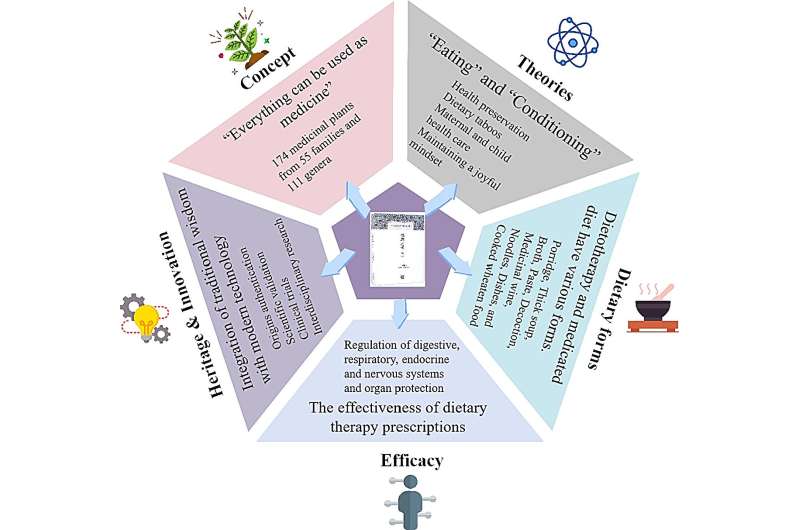
### Using Food as Medicine: A Modern Exploration of an Ancient Practice### Using Food as Medicine: A Modern Exploration of an Ancient Practice While the concept of using food as medicine may seem novel, it has been an established practice for centuries. Today, researchers are re-examining this ancient approach, combining it with modern scientific advancements to create a more comprehensive understanding of the therapeutic power of food. The ancient Chinese medical text Yinshan Zhengyao, compiled in the 14th century, embodies this concept of “homology of food and medicine.” It categorizes 174 medicinal plants and emphasizes the connection between mental well-being and physical health. Modern research has validated many of the principles outlined in Yinshan Zhengyao, demonstrating the role of food in regulating digestion, respiration, hormone balance, and nervous system function. By viewing food as medicine, individuals can harness its potential not only as a source of energy but also as a means of preventing and treating chronic diseases. Researchers are exploring the use of modern technologies, such as genomics and metabolomics, to analyze the interplay between food and health. By integrating these advancements with the wisdom of traditional texts like Yinshan Zhengyao, they aim to provide a more holistic approach to healthcare. This integration offers a promising avenue for addressing the pressing health challenges of our time, such as obesity, cardiovascular disease, and mental health disorders. By embracing the power of food as medicine, we can empower individuals to take control of their health and live longer, healthier lives.

The five key elements that bring together Yinshan Zhengyao to explore the effects that food can have on all facets of life. Credit: Chun-Hong Zhang and Min-Hui Li, Baotou Medical College
While this concept may have been the norm hundreds of years ago, many contemporary societies are overfed and undernourished, leading to a flood of health problems across many populations. Going back to basics could be a big part of the solution
We’ve all heard the phrase “you are what you eat,” but most often we use it to describe the unfortunate health effects that can result from a long-term unhealthy diet. However, it can also be the other way around.
Using the text of Yinshan Zhengyao, researchers place an old and established concept of using nutrition to treat ailments in a modern context, adding the benefits of current knowledge of genetics and metabolism, bringing the teachings of Yinshan Zhengyao back into the public eye.
Researchers published their results in Homology between food and medicine.
“Yinshan Zhengyao is the world’s first authoritative nutritional treatise, compiled by Hu Sihui, a dietician from the Yuan Dynasty. This work embodies the traditional Chinese medicinal concept of ‘homology of food and medicine’, rich in the cultural heritage of the Chinese nation,” said Min-Hui Li, researcher and author of the study.
Yinshan Zhengyao includes 174 medicinal plants divided into 55 unique plant families and 111 genera. These plants are essential to the culture of Traditional Chinese Medicine (TCM). Another very important part of this traditional Chinese text is the power of the mind and mood over the human body. Joy and tranquility are aspects that are emphasized in Yinshan Zhengyao, as the connection between mind and body can be as important as the fuel an individual takes in.
“In Yinshan Zhengyao, dietary therapies are of particular interest because of their effects on the regulation of digestion, respiration, hormone balance and nervous system functions, and on the protection and regulation of various organs,” Li said.
The basis of this text is to treat (and prevent) chronic diseases through the use of plants, but also to emphasize the importance of quality food in society. By viewing food as medicine, more emphasis and care is placed on the preparation and consumption of food by “putting the food to work” not only as a source of energy, but also as a source of longevity.
In TCM, diseases arise from imbalances in the body. For example, kidneys are seen as organs that work closely with the reproductive system and the regulation of fluid metabolism.
Modern discoveries show that the kidneys, in addition to being an important part of the urinary system, are also involved in maintaining fluid balance and endocrine function. Treating one part of the body can have a cascade of effects that one would not have imagined they would be involved in, such as lower back pain or weakness in the limbs due to kidney problems.
With the Yinshan Zhengyao text dating back to the early 14th century, modern medicines and therapies can be used in conjunction with the plant and dietary information available from this early work on diet, health and nutrition. Professor Min-Hui Li and his team propose to integrate modern information to explore and analyze the use of medicines and parallel food sources in health care.
By studying modern applications of health and medicine, such as the human genome, metabolism, and regulatory networks and relationships, researchers aim to continue improving human health while placing the idea of food as medicine in a broader, more modern perspective.
More information:
Hui Niu et al, Yinshan Zhengyao: Exploring the Power of Food and Inheriting Healthy Thoughts, Food and medicine homology (2024). DOI number: 10.26599/FMH.2024.9420006
Provided by Tsinghua University Press
Quote: Using Food as Medicine: A Modern Exploration of an Ancient Practice (2024, July 15) Retrieved July 15, 2024, from https://medicalxpress.com/news/2024-07-food-medicine-modern-exploration.html
This document is subject to copyright. Except for fair dealing for private study or research, no part may be reproduced without written permission. The contents are supplied for information purposes only.
